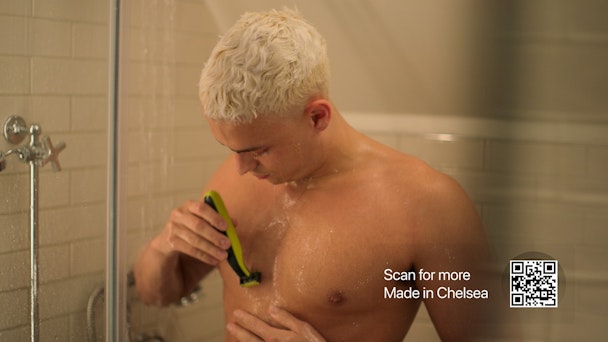Shoppable TV shows come to Channel 4
Phillips is spearheading the broadcaster’s first push into shoppable shows. Its commercial innovation lead, Emma Derrick, outlines the ambition.

Channel 4’s Made in Chelsea product placement deal
Channel 4 is looking to find new revenue from advertisers as it experiments with ad formats that allow viewers to immediately buy a product they see on screen.
As Emma Derrick, its commercial innovation leader for non-advertising, tells The Drum, a huge percentage of brands have performance-related marketing budgets. “We’re just reacting to that. Whether it’s on the back of editorial content or creating shoppable moments in advertising…we know there’s demand out there.”
It’s not the first broadcaster to realize this opportunity. Arguably, Channel 4 is late to the party. Stateside, the likes of NBC Universal, Roku and Peacock have all invested in shoppable TV tech. In the UK, Channel 4’s rival ITV launched its proposition back in 2021.
Advertisement
Channel 4’s foray will begin with its hit reality TV show Made in Chelsea, where viewers can buy products used by the cast as they appear on the show. The first brand to try the ad format will be Philips, which already had a product placement deal with the show.
Across three episodes of the latest series, specific scenes feature a QR code when cast are using a Philips product. When viewers scan the code, they will be taken to a webpage where they can find out more details about Made in Chelsea and also buy Philips products, including the one they have just seen featured in the show.
That the QR codes link through to additional Made in Chelsea content was crucial to avoid viewers feeling bombarded by advertiser content, says Derrick. “At the heart of this is program-related material. When people click, they’re given additional program information before they get to the click-to-purchase. There’s always got to be that addition.”
Advertisement
Channel 4 is confident this will deliver for viewers and advertisers and against its bottom line. In its annual report for 2022, the broadcaster admitted the second half of the year was a “significantly more challenging consumer environment, which has continued into this year.” ITV has called it the worst advertising environment for traditional broadcasters since the 2008 financial crash.
By the end of 2022, one-third of Channel 4’s total revenues no longer came from linear advertising, while advertising accounted for 22% of revenues – a 14% increase over 2021.
Derrick’s priority, then, is to scale these new performance-based solutions for brands, but she stresses it won’t work for every show it airs.
“There are other programs in discussion to see what would work. It won’t work with everything. It’s a three or four-way consultation between the commissioner, the producer and the brand. We see it working with recipe content, for example. So [viewers] can click to buy all the food for a recipe they watch.”
Suggested newsletters for you
Channel 4 is also experimenting with affiliate links, putting them into digital content on its youth-focused YouTube platform, Channel 4.0.
“We’ve started layering affiliate links below the video. It’s organic, not product placement. If a product happens to feature in a show, then viewers can click to buy it from a link underneath. So, we’re starting to test that sort of commerce activity as well.”

